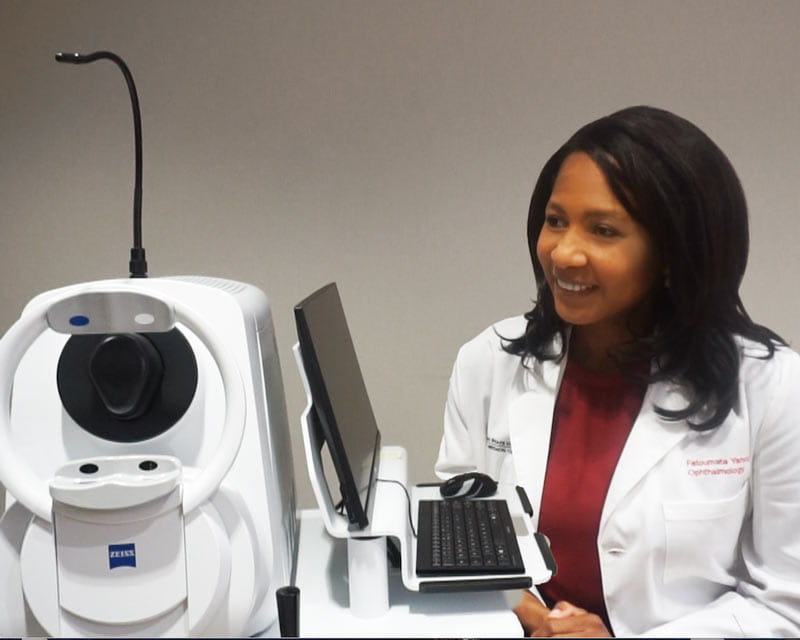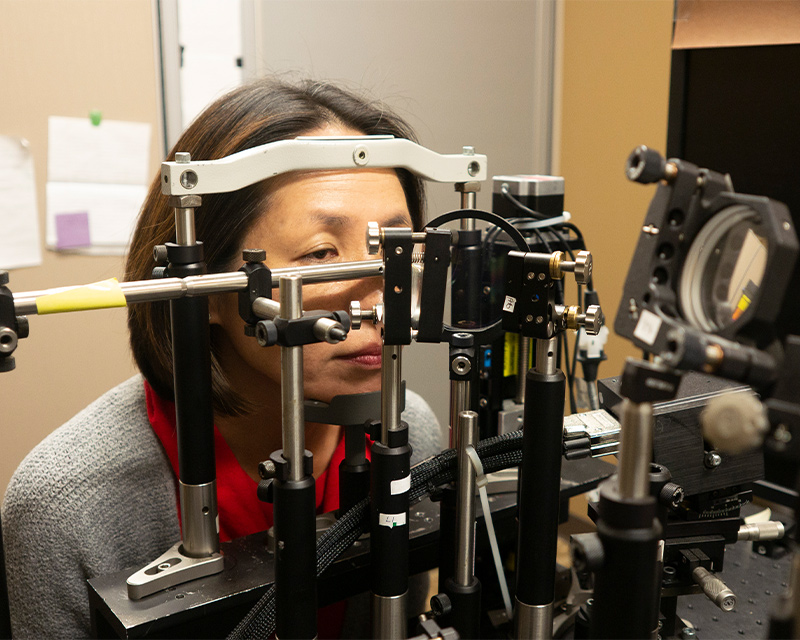
Swept-source OCT angiography reveals exquisite details of ocular structures

The Ohio State University Wexner Medical Center researchers are building new, advanced optical imaging systems that will allow doctors to see the retina at the highest possible resolution.
“To achieve extreme clarity, we’re adding adaptive optics to traditional optical coherence tomography,” explains Nathan Doble, PhD. “We’re trying to see individual neurons in the back of the eye.”
Originally, adaptive optics was developed for military and astronomy applications to correct for atmospheric distortion.
Now, Dr. Doble and Stacey Choi, PhD, are researching this technology to correct for distortions in the lens and the cornea, and help doctors detect the early stage of eye diseases, such as:
“Our ultimate goal is to use the adaptive optics to look for subtle changes in the eyes that patients may not even be aware of,” Dr. Choi says. “Potentially, we can intervene with treatment very early and prevent or slow down disease progression.”
Recently, Ohio State researchers were the first to image the elusive retinal ganglion cells in the diseased eye of a living glaucoma patient – a novel achievement because these cells are transparent and very hard to see.
“In glaucoma patients, the retinal ganglion cells are some of the first to be affected,” Dr. Doble explains. “Using adaptive optics, we hope to actually see and count the retinal ganglion cells, which will serve as valuable biomarkers for the disease as well as a way to detect changes at a much earlier stage of the disease than has been possible and ultimately quantify severity of the disease at the cellular level.”
Adaptive optics also will play a key role in the development of new drugs and gene therapies. Ophthalmologists will not have to rely solely on subjective vision acuity charts to determine whether the treatment is working.
“You can actually image the retina before treatment. After treatment is applied, you can use adaptive optics to recheck the density of cells and monitor the patient to determine the efficacy of the treatment,” Dr. Choi explains.